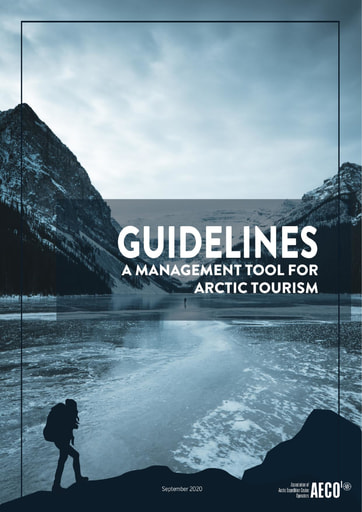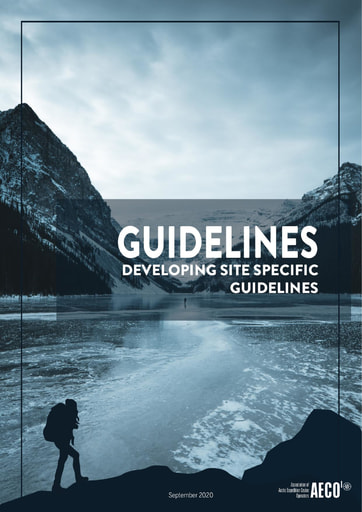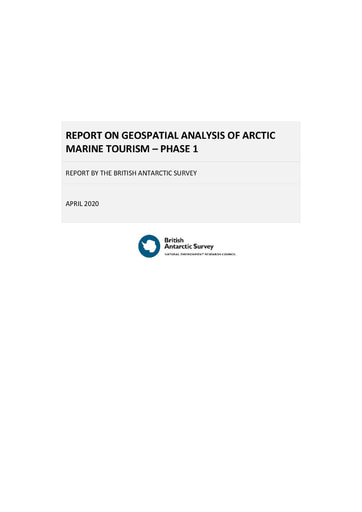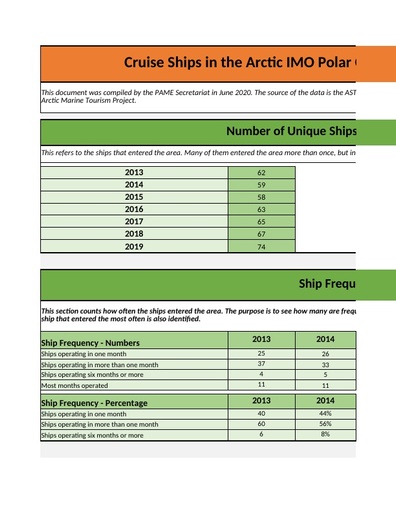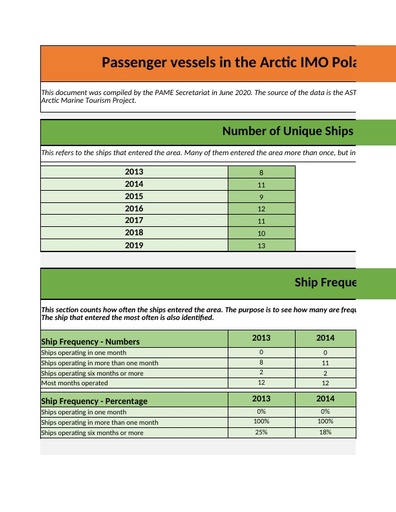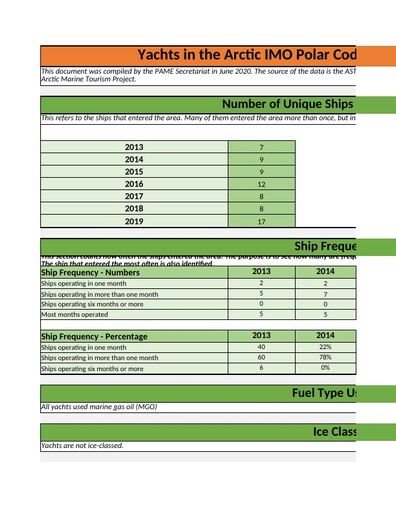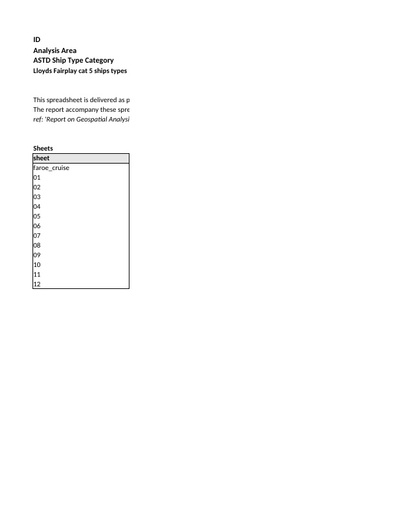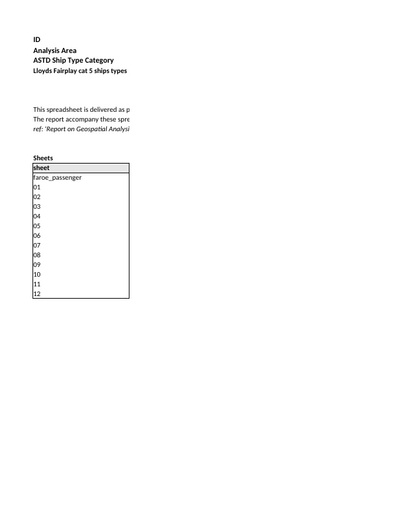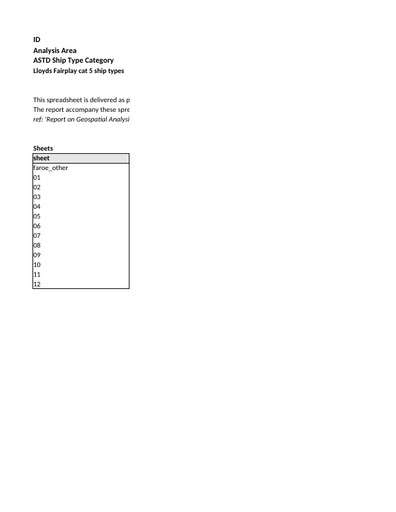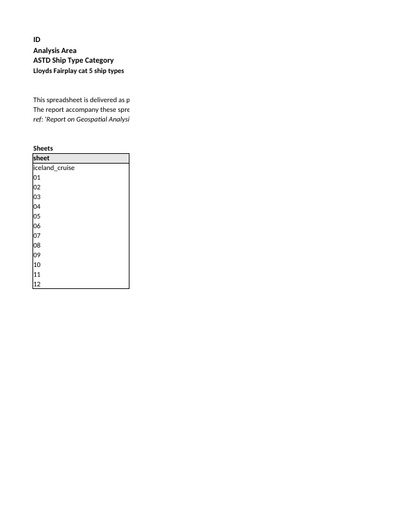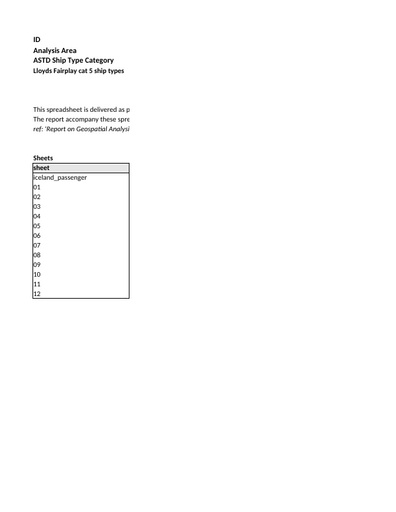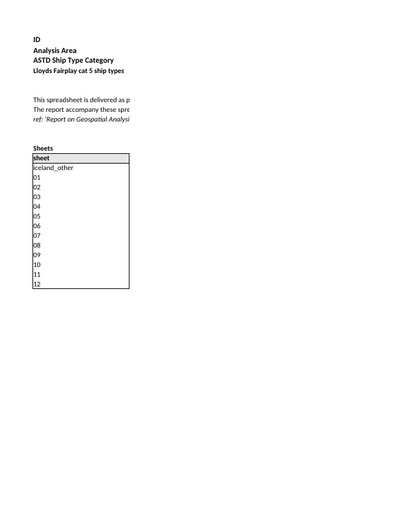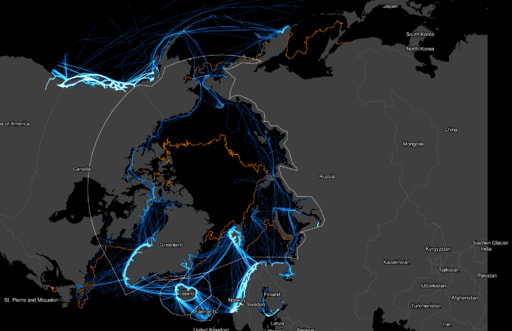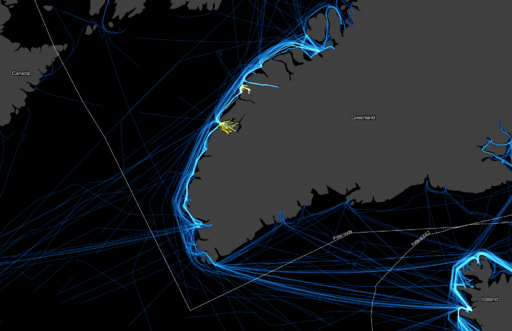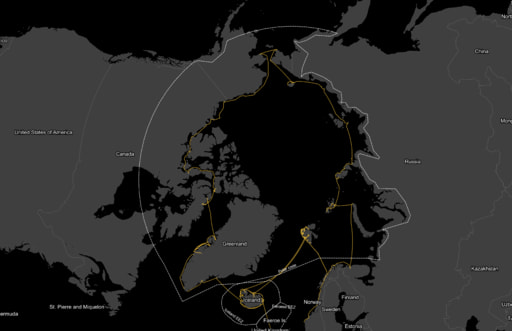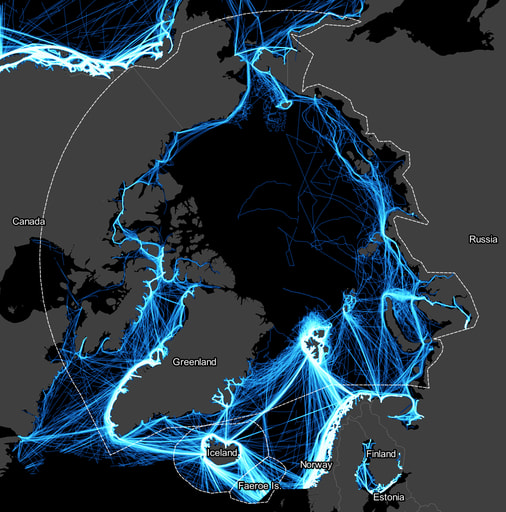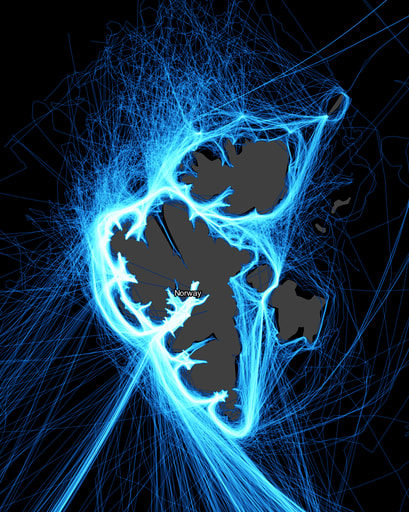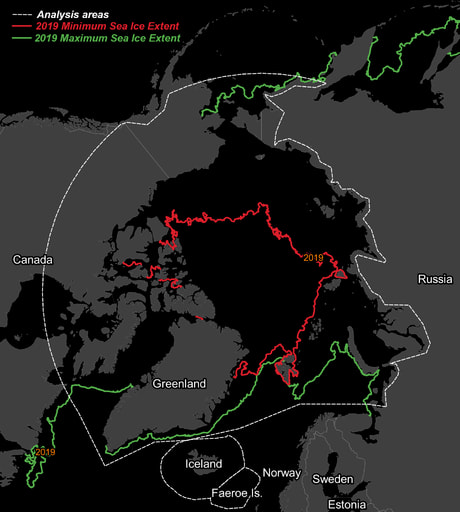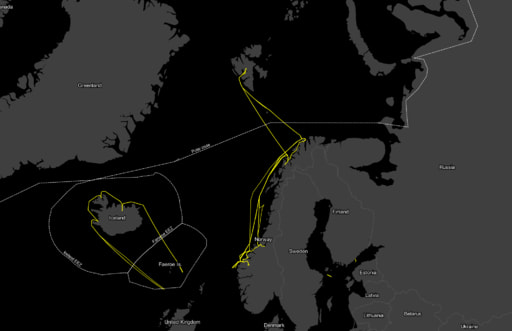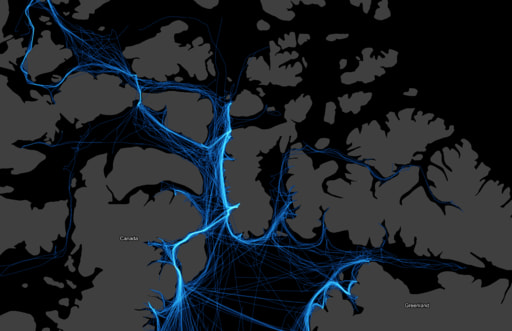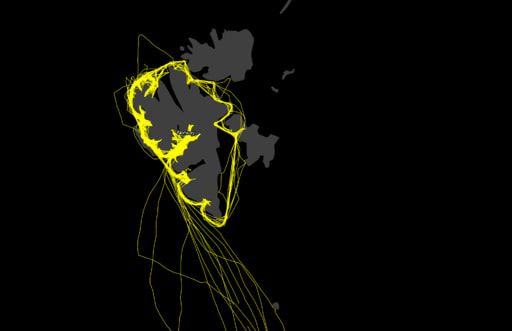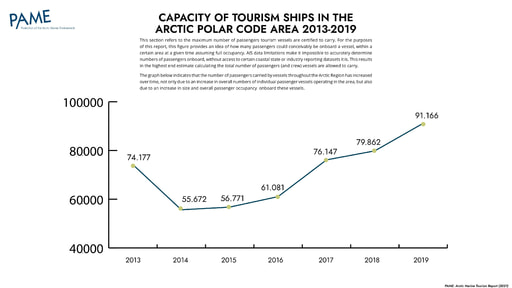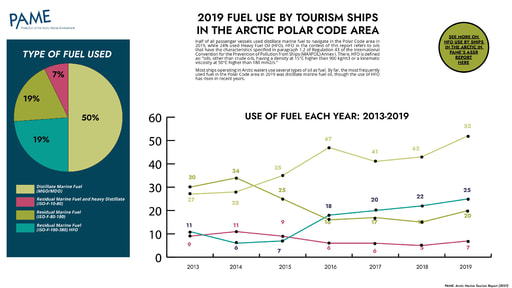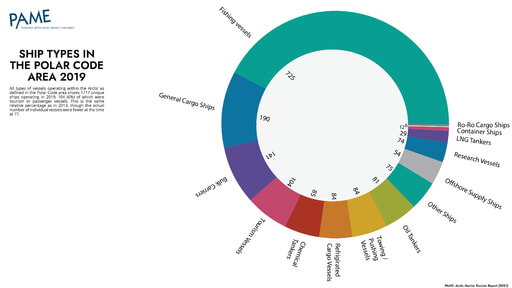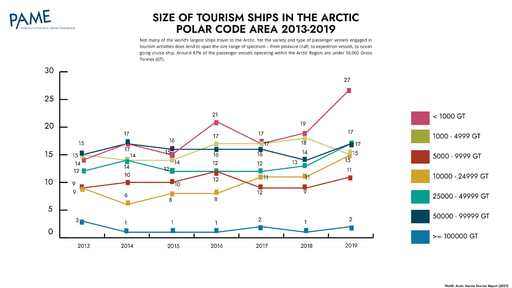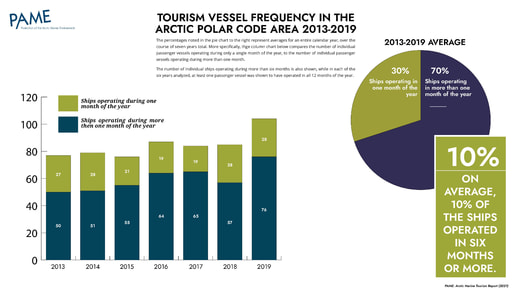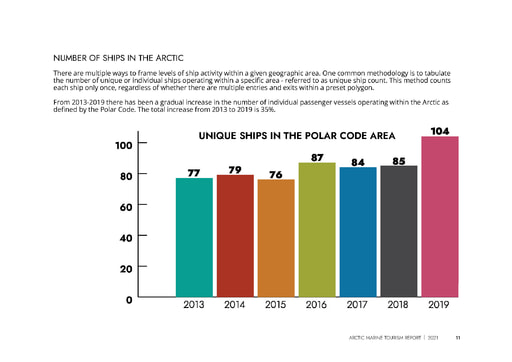 The Arctic Marine Tourism Project: Passenger Vessel Trends in the Arctic Region (2013-2019) (AMTP 2021) expands upon a previous PAME project, the Arctic Marine Tourism Project – Best Practice Guidelines (AMTP 2015).
The Arctic Marine Tourism Project: Passenger Vessel Trends in the Arctic Region (2013-2019) (AMTP 2021) expands upon a previous PAME project, the Arctic Marine Tourism Project – Best Practice Guidelines (AMTP 2015).
The project comprised of two work packages:
- Work Package 1 (WP1): Compilation and analysis of data on tourism vessels in the Arctic using PAME's Arctic Ship Traffic Database (ASTD) to better understand recent developments.
- Work Package 2 (WP2): Summary of existing site-specific guidelines for near-shore and coastal areas of the Arctic visited by passengers of marine tourism vessels and pleasure craft
The project report includes the analysis, made by the British Antarctic Survey and further analysed by the PAME Secretariat, graphics, maps and other information, also available below in the project repository.
The report also includes a standardized template that could be used for the development of site-specific guidelines aimed at tourists/vessel operators, and tailored towards, inter alia, mitigating safety and environmental risks, encouraging sustainable use, and educating visitors on ecological, cultural, and historical features unique to particular areas. An explanation of the methodology used and the step-by-step approach to be employed is also included. This was done in close collaboration with the Association of Arctic Expedition Cruise Operators (AECO).
Tourism Project Repository
All content is free for use if PAME is cited.
 2015: Arctic Marine Tourism Project (AMTP)
2015: Arctic Marine Tourism Project (AMTP)
From 2013-2015, PAME developed the 2015 predecessor of the 2021 report. PAME organized workshops to identify issues or gaps where the Arctic Council can add value by articulating best practices in relation to vessel-based Arctic tourism. The result of this project is a best practices document that:
- avoids duplication by being aware of existing guidelines and best practices
- identifies existing best practices while also determining any practical problem areas or actual issues requiring some resolution
- takes into account regional variations, categories of tourist/vessel operations, various stakeholder perspectives, and practical us ability of a best practices document; and
- considers the intended audience(s) for development of best practices.
The final report was released in 2015 and introduced at the Arctic Council ministerial meeting in April.
In the context of the AMTP ‘Arctic marine tourism’ is understood to include activities or interactions that are in some way facilitated by (though not limited to) the operation of a vessel in Arctic waters. While a convenient shorthand, it is recognized that the term does simplify an otherwise diverse industry and range of activities that reflect many regional and geographical variations.
Accordingly, unless otherwise specified, the best practice guidelines that follow are intended for broad application and not necessarily exclusive to vessel operators, but rather the coastal administrations and local communities directly involved in aspects of Arctic marine tourism as well. ‘Sustainable Arctic tourism’ is given the same definition used by the Arctic Council’s Sustainable Development Working Group (SDWG) in the Sustainable Model for Arctic Regional Tourism (SMART) Report to mean “tourism that minimizes negative impacts and maximizes socio-cultural, environmental and economic benefits for residents of the Arctic”.
The AMTP best practice guidelines is a voluntary document encouraging action on behalf of the Arctic Council, Arctic States, and in some instances collaboration between the two, and is meant to strengthen, not preclude, the range of existing mandatory requirements and voluntary policies and guidance currently in place to support sustainable Arctic marine tourism issued by levels of government, industry, industry associations and the NGO community.
Click here to download the report.







